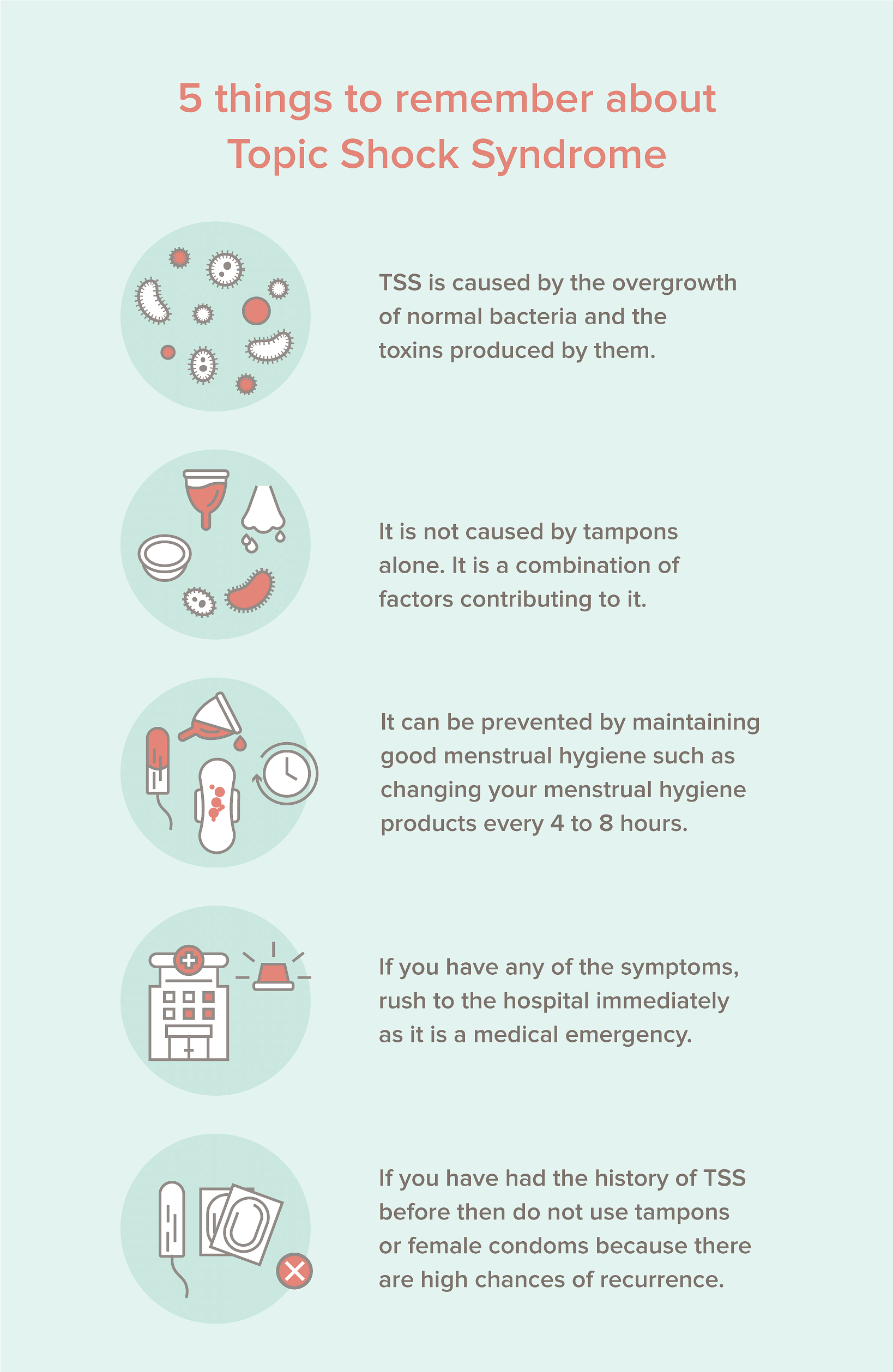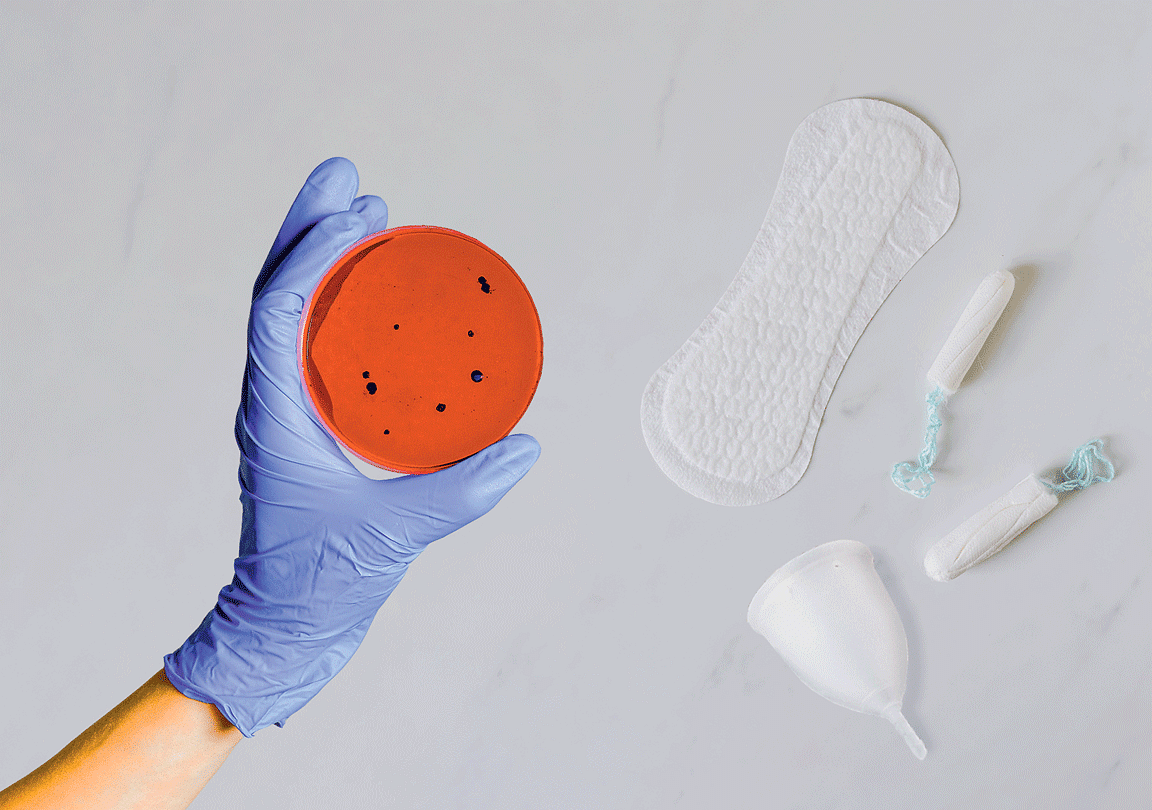When I talk about menstrual management products in my gynaecology practice, I find that some patients are terrified of Toxic Shock Syndrome (TSS), while others have never even heard of it. Toxic Shock Syndrome is serious, so it’s important to understand it, but there’s no need to panic.
What is Toxic Shock Syndrome (TSS)?
It is a fortunately rare condition caused by toxin produced by overgrowth of bacteria. This disease made headlines in the late 1970s after the deaths of several young women who were using super-absorbent invasive products that were later removed from the market. It’s important to be clear – sanitary products don’t cause TSS, but they are co-factors in the development of the condition.
What are the types of TSS?
There are actually two types of Toxic Shock Syndrome: menstrual and non-menstrual. Non-menstrual TSS affect men and children who are at risk due to toxins released by streptococcus. Menstrual TSS affects women when a sanitary product is used for a long time – one pad for more than 18 hours. It results from toxins produced by Staphylococcus aureus bacteria, but may also be caused by toxins produced by Group A streptococcus bacteria.
What can contribute to the development of TSS?
Common associated factors are recent cuts or burns on skin, surgery, recent childbirth, miscarriage, in those using contraceptive sponges, diaphragms, tampons ,menstrual cups, recent history of viral infection like flu or chickenpox, or history of usage of prosthetic devices.
Staphylococcus aureus is normally and harmlessly present in vagina unless there is a favourable environment for it to grow rapidly and release toxins. Leaving any kind of sanitary product in the vagina for too long creates a breeding environment for bacteria, causing the entry of toxins in the bloodstream.
The way in which toxins enter the bloodstream may also be related to invasive products use. Sliding them into place could make microscopic tears in vaginal walls, rupturing tiny blood vessels. Leaving them in too long or using it when flow is light can dry out your vagina. This makes tearing even more likely.
What are the symptoms of TSS?
Symptoms of Toxic Shock Syndrome can vary from person to person. If TSS is associated with menstruation and the use of invasive products, they usually appear within 3 to 5 days of the beginning of the period.
In most cases, symptoms appear suddenly. A high fever that spikes, low blood pressure, headache, vomiting or diarrhea. It can also be a rash resembling the sunburn particularly on the palms and soles. Other symptoms include muscle aches, confusion, redness of eyes, mouth and throat, and seizures.
How is TSS treated?
It can be treated with antibiotics and oxygen to help with difficult breathing, fluids to maintain BP. In some extreme cases, a doctor might recommend ICU stay for close monitoring. In some instances, it can affect major organs in the body, including the liver, kidney and heart. It is important to promptly seek treatment to prevent major organ damage, in case of extreme situations.
Certain precautions to prevent TSS:
- Change tampons and pads every 4 to 8 hours.
- Wear a low-absorbency tampon or pads during low flow days.
- Never use more than one product at a time.
- Clean your hands thoroughly and more frequently.
- Keep cuts and surgical incisions clean and change dressings often.
- Do not wear tampons or female condoms if you have a personal history of TSS; it can recur in 30% of the cases.
If you are menstruating and have developed a high fever with vomiting, and have been using any invasive or inserted menstrual management product, you must get medical help right away. Remove the product immediately – even before calling your doctor.

We always consider menstrual health to be our primary concern and our experts always work towards providing you with authentic content. Read up more on menstrual health in our category, right here. You can always find articles written by Dr. Amodita Ahuja here.










1 Comment